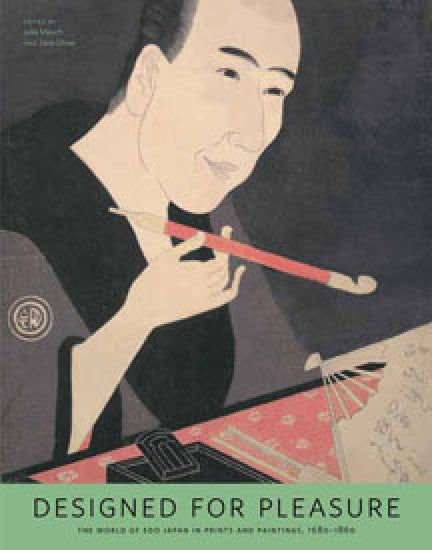Designed for Pleasure
“Designed for Pleasure: The World of Edo Japan in Prints and Paintings, 1680-1860”
“Designed for Pleasure: The World of Edo Japan in Prints and Paintings, 1680-1860”
Editors: Julia Meech and Jane Oliver
Publisher: Asia Society/Japanese Art Society of America/ University of Washington Press, April 2008
Format: Paperback, 256 pages
Price: $375 plus postage
Designed for Pleasure brings together paintings, prints, and illustrated books featuring images known as ukiyo-e, or pictures of the floating world. The carefully selected images present the principals of that realm—the actor, the artist, the courtesan, the poet, the publisher, the patron—and they also reveal the confluences and contradictions in a time of enormous social, cultural, and economic change in Japan.
This book examines the floating world of popular culture centered in Edo (modern Tokyo) during the period between 1680 and 1860, when Japan transformed itself from an agrarian to a booming commercial economy. By 1710, Edo was the largest city in the world, with a population of over a million. We know so much about this time in part because of the vast body of imagery created and treasured by succeeding generations. The artists and writers held a looking glass up to their heady world and, in the process, to themselves. Fads and fashions proliferated, and this highly literate, consumer-driven society insisted on being up to date. Innovative color printing techniques fed the demand for ever-new information.
Print publishers, mindful of a business opportunity, also responded to the clamor for representations of the public’s cherished heroes. Their stables of artists not only produced mass-market prints and books, but used their connections in the literary salons of the day to secure commissions from the wealthy and elite for luxury paintings and printed works.
Building on the existing body of ukiyo-e scholarship, a team of renowned experts presents a new perspective and an expanded view of the visual culture of Edo Japan and the way in which art became more accessible to a new class beyond the ruling elite. The volume authors showcase individuals—adding to the already substantial scholarship on Hokusai, Hiroshige, and Utamaro—including the father of ukiyo-e, Hishikawa Moronobu; the artist and publisher Okumura Masanobu; the color innovator Suzuki Harunobu; the master publisher Tsutaya Juzaburo; and the brilliant painter Katsukawa Shunsho. Rather than focus on one artist, one school, or one artistic medium, Designed for Pleasure presents the best of ukiyo-e, in their three primary manifestations: paintings, prints, and illustrated books.
Julia Meech is the author of Frank Lloyd Wright and the Art of Japan and the editor of Impressions, the journal of the Japanese Art Society of America. Jane Oliver is an editor and consultant in Asian art. Other contributors include John T. Carpenter, Timothy Clark, Julie Nelson Davis, Allen Hockley, Donald Jenkins, David Pollack, Sarah E. Thompson, and David Waterhouse.
Couldn't load pickup availability
Share

